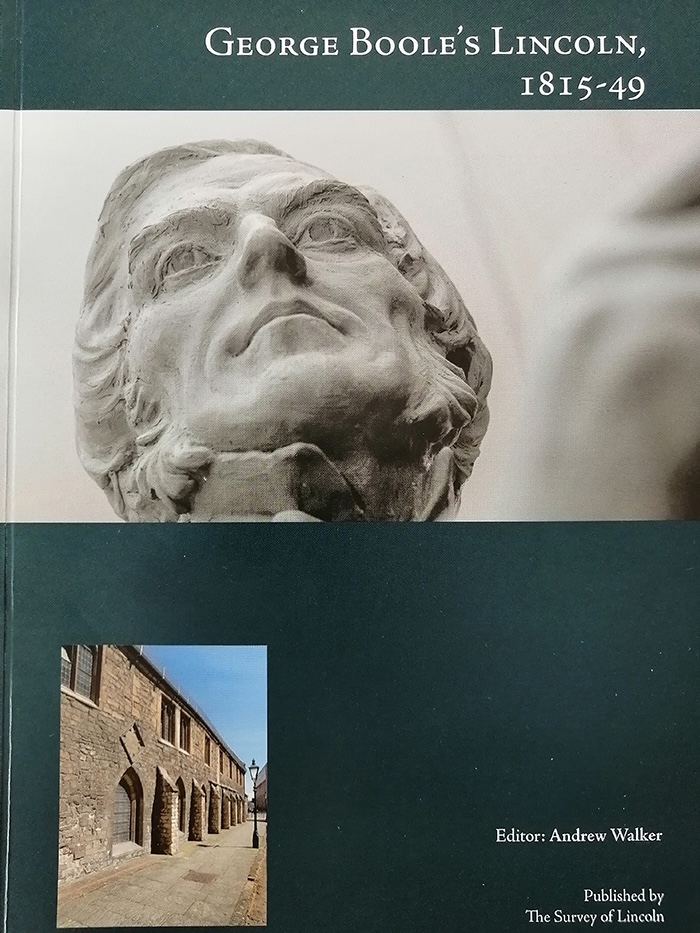
George Boole’s homecoming
In the latest article exploring the work of The Survey of Lincoln, Andrew Walker marks the arrival of a sculpture celebrating one of Lincoln’s most prominent former inhabitants.
In the summer of 2022 the three-dimensional image of Lincoln-born mathematician, George Boole, was assembled in front of Lincoln’s railway station.
This is the work of the internationally renowned sculptor, Antony Dufort, and was been funded by the Heslam Trust, also responsible for other public art works in the city, such as the Empowerment installation, which spans the River Witham by the Waterside Shopping Centre.
At a time when many statues were being taken down, why was George Boole worth recognising in this way? The process of logical thought developed by Boole, known as Boolean logic, breaks down any complex problem into a series of simple steps, based on the comparison of two statements as being either true or false.
Using a binary code and the digits ‘0’ and ‘1’, Boolean logic is the basis upon which all digital devices are built. Mobile phones, digital televisions and all computers operate using Boolean logic. Understandably, today George Boole is seen as the grandparent of the digital age.
It seems appropriate, then, to celebrate the achievements of this man, born in the city of Lincoln in 1815 and living here for much of the first 30 years of his short life until his departure to become a professor of mathematics at Queen’s College, Cork in 1845, where he worked until his death in 1864, aged 49.
George Boole packed a lot into his time living, working and studying in Lincoln. The Survey of Lincoln has highlighted some of the locations in the city of significance to Boole. He was born in New Street, Lincoln, the site of today’s 34 Silver Street.
His father, John, was a shoemaker and his mother, Mary Anne, a former lady’s maid. Although as a child his family moved regularly, their homes were never far from the city centre. George attended the National School, opposite his home in Silver Street and then at Thomas Bainbridge’s Classical and Commercial Academy on Fish Hill (now Michaelgate). George soon showed himself to be a talented pupil, excelling in languages as well as mathematics. He went on to become a teacher, working for short periods in Doncaster, Liverpool and Waddington before, briefly, at the age of 20, opening his own academy on Free School Lane in 1835.
He returned to Waddingtom Academy as the head teacher before, in 1840, he opened a boarding school for young gentleman at 3 Pottergate, Minster Yard. Throughout his time teaching, George Boole researched and published in scholarly journals, developing a strong academic reputation and receiving Gold and Silver Medals for his work awarded by the Royal Society in 1844.
He also participated in many aspects of Lincoln life as a young adult. Like his father he was an active member of the Mechanics’ Institute, based at Greyfriars on Free School Lane.
Upon his appointment as Professor of Mathematics at Queen’s College, Cork, a testimonial supper was given in his honour in December 1849 at Lincoln’s ‘White Hart Hotel’.
It is appropriate that the new sculpture is placed outside the city’s surviving railway station, which was opened in 1848 and which he would have known and used. This figure of George Boole is an important link connecting the present digital age that he helped develop to the steam age in which he thrived.
To find out more about The Survey of Lincoln and its work, see www.thesurveyoflincoln.co.uk. The Survey’s book, George Boole’s Lincoln, 1815-49 edited by Andrew Walker, is now available.
Number 34 Silver Street is currently occupied by Starkey & Brown, Estate Agents. The taller part of the premises, on the right side, is the site where George Boole was born, and may be the actual house in which his birth took place. Picture: Geoff Tann.

